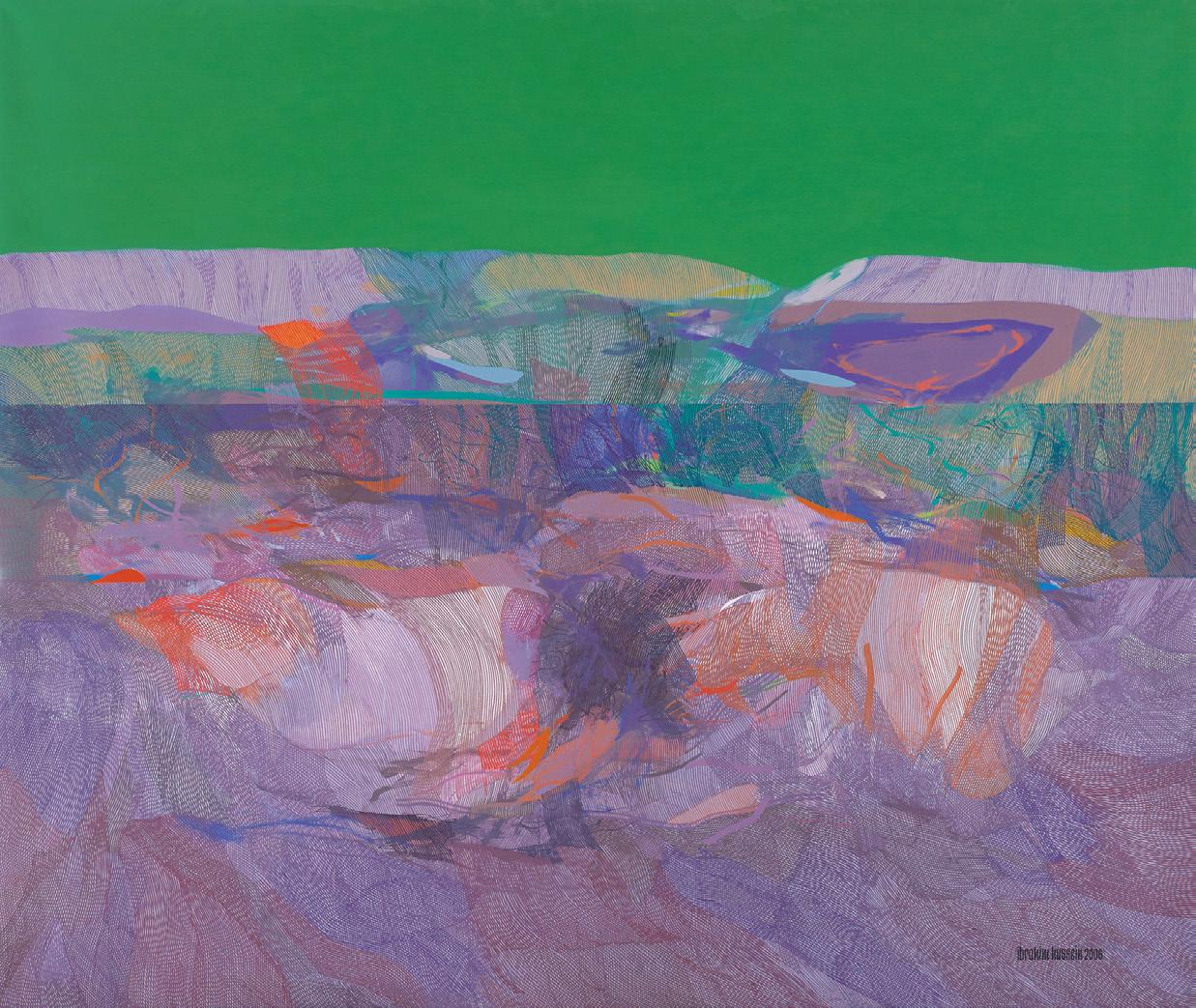
12 minute read
Sales Exceeds Expectations, Again
Henry Butcher Art Auctioneers Malaysian and Southeast Asian Art Auction March 2021 edition recorded RM4 million sales of artworks, with a high successful selling rate of 74% with 115 Lots sold out of the 155 Lots on offer.
“The result is encouraging and surprisingly pleasant, considering the current sluggish economic atmosphere. The last time we achieved RM4 million sales, it was way back in 2012, where the art market was at its peak. The clients know it is a Buyer’s Market now, thus taking the opportunity to buy quality artworks at reasonable and attractive prices; good decision!
Advertisement
“We sincerely appreciate the continuous support from the buyers and art collectors,” said Sim Polenn, the Director of Henry Butcher Art Auctioneers.
Henry Butcher Malaysian and Southeast Asian Art Auction March 2021 achieved RM4 million.
Sim Polenn, Director of Henry Butcher Art Auctioneers, a very big thank you to all our art collectors for making this event a successful one.
The sale’s top lots were led by Datuk Ibrahim Hussein’s 2006 masterpiece (sold pre-auction, within the estimate range of RM1.3-RM1.8 million), Latiff Mohidin’s Voyage Rimbaud II (painted during 20032004) which was sold for RM320,000, and Awang Damit Ahmad’s 1992 masterpiece Apa Khabar Ledang (from the most sought-after Essence Of Culture (EOC) series) sold for RM224,000. The auction sale reflects sustained interest in high quality masterpieces.
A beautiful work by Noor Mahnun Mohamed titled A Song For Two, sparked a prolonged bidding battle in the sale room, with the first bid starting at RM90,000, and was eventually sold at RM156,800. A 1999 masterpiece from Yusof Ghani’s Wayang series was also sold at a higher price of RM145,600,
Untitled, 2006 by Datuk Ibrahim Hussein (Lot 131) was sold pre-auction within the estimate range of RM1.3 to RM1.8 million.
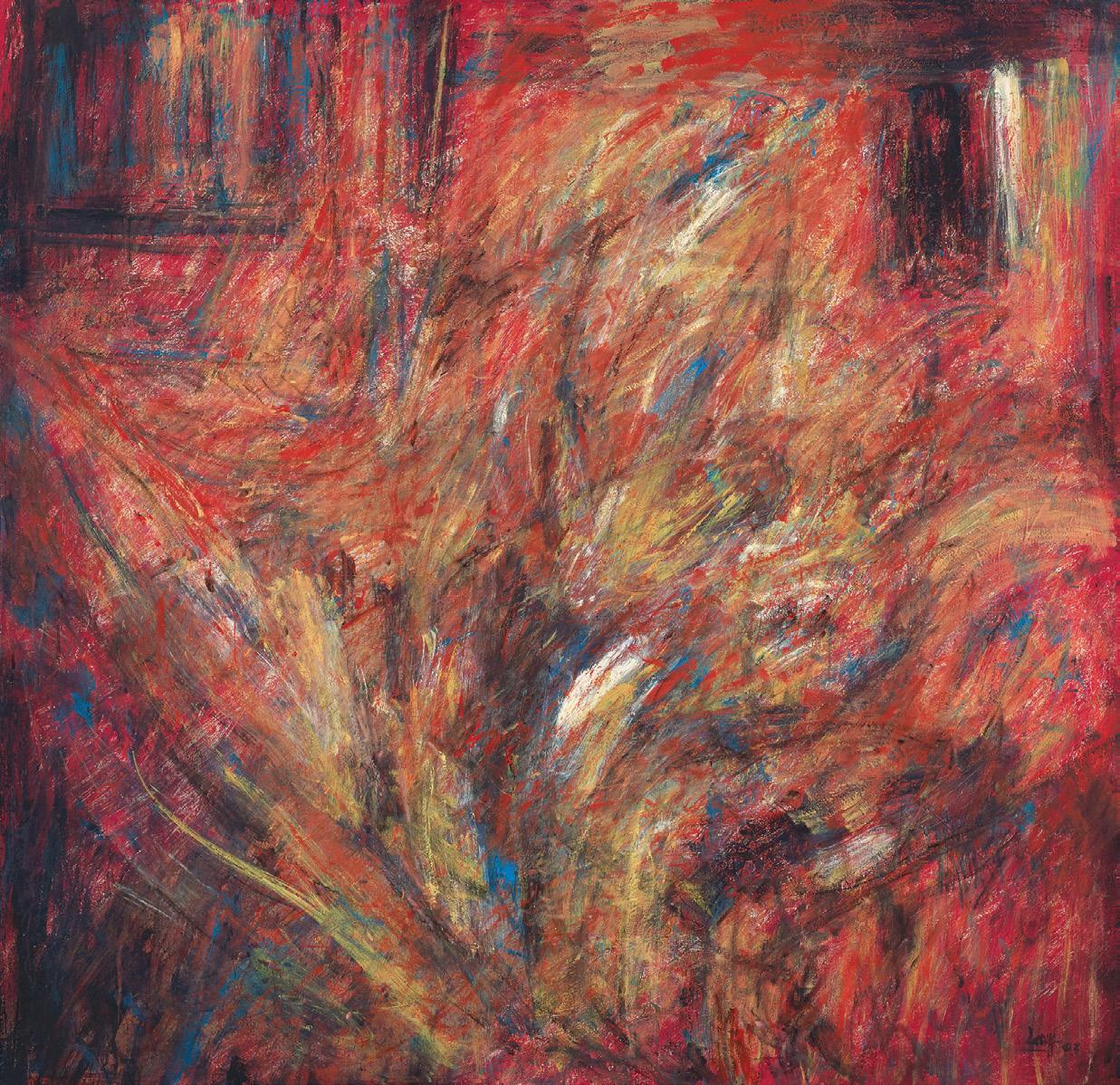
Abdul Latiff Mohidin’s Voyage Rimbaud II, 2003-2004 (Lot 132) was among the top lots sold for RM320,000.
almost three times the starting bid of RM50,000.
Senior artist Yeoh Jin Leng’s rare 1966 masterpiece featuring a soothing blue hue titled Storm Clouds was sold for RM100,800; while a bold work by the late Khalil Ibrahim titled Reflections (IX) (painted in 1980) was sold for RM106,400.
Collectors took the opportunity to grab important batik works by Dato’ Chuah Thean Teng (widely recognised as the Father of Batik Art), Dato’ Tay Mo Leong, Lee Kian Seng, and M. Sukri Derahman. Dato’ Chuah Thean Teng’s masterpiece Bestowment achieved RM47,040 while another piece by the same artist titled Kampung Life achieved RM17,920.
Contemporary artists such as Ahmad Zakii Anwar, Nadiah Bamadhaj and Zulkifli Yusoff were well represented in the sale. A fascinating piece by Ahmad Zakii Anwar titled Incognito was sold for RM50,400. An interesting piece by Nadiah Bamadhaj, No Really I’m Fine was sold for RM47,040, while Zulkifli Yusoff 1995 masterpiece was sold for RM44,800.
“In the span of 11 years, Henry Butcher Art Auctioneers recorded art auction sales of RM62 million, selling more than 2,600 pieces of artworks, in which 90% are Malaysian Art. We are glad that this auction reflects a widening of interest for works from the region, and participation of new and young collectors,” said Sim.
“The collectors pool is growing, and there is still much room to further expand the community. This is the first auction of the year and it has given the company a good start. This is made possible with the tremendous and continuous support from the art lovers.
“We hope to achieve greater heights (in sales) by year end.”
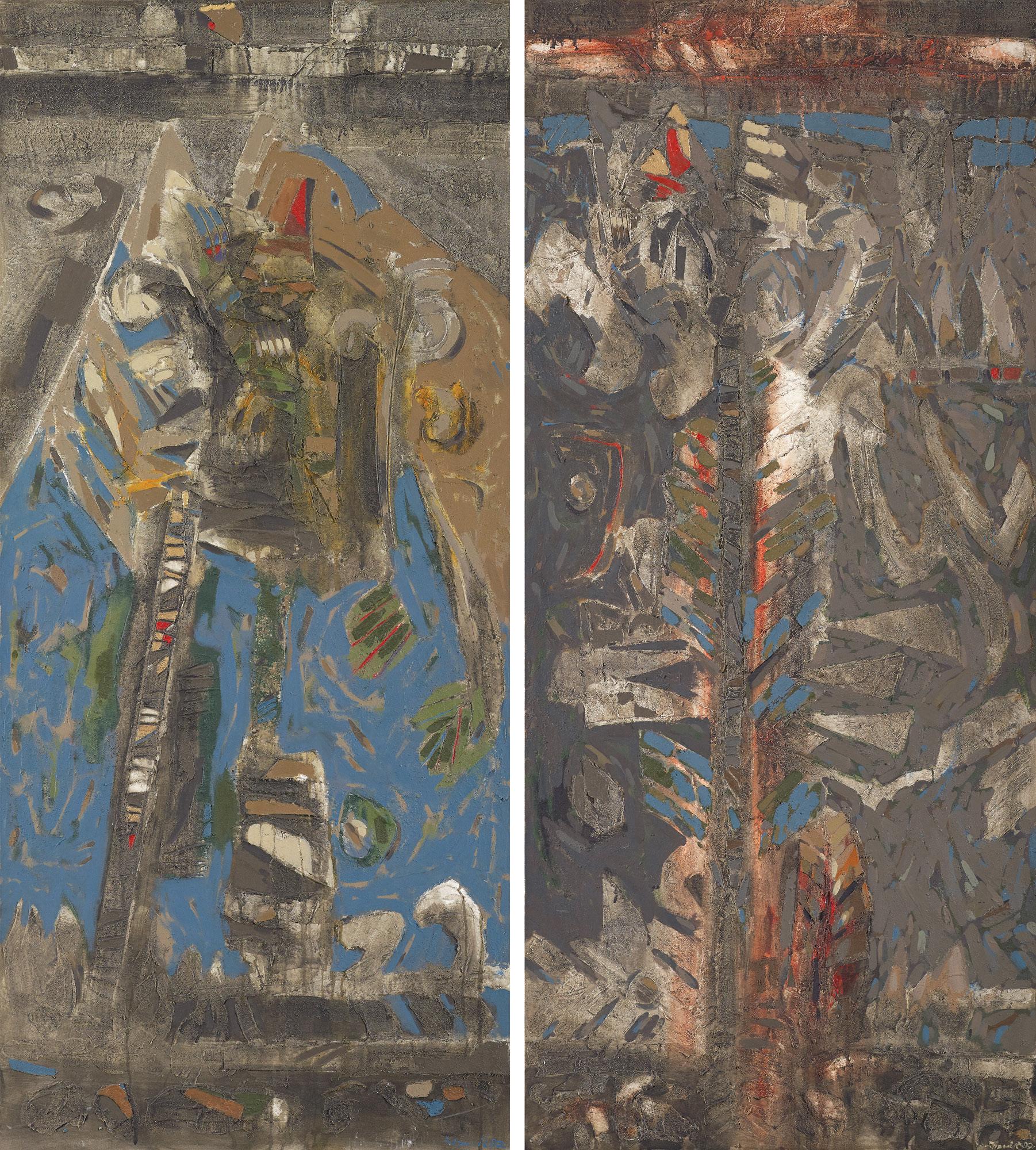
Lot 133 of Awang Damit Ahmad’s Apa Khabar Ledang (Essence Of Culture EOC Series), 1992, fetched RM224,000.
Noor Mahnun Mohamed’s A Song For Two, 2000 (Lot 77) sparked a bidding battle and went home at RM156,800.
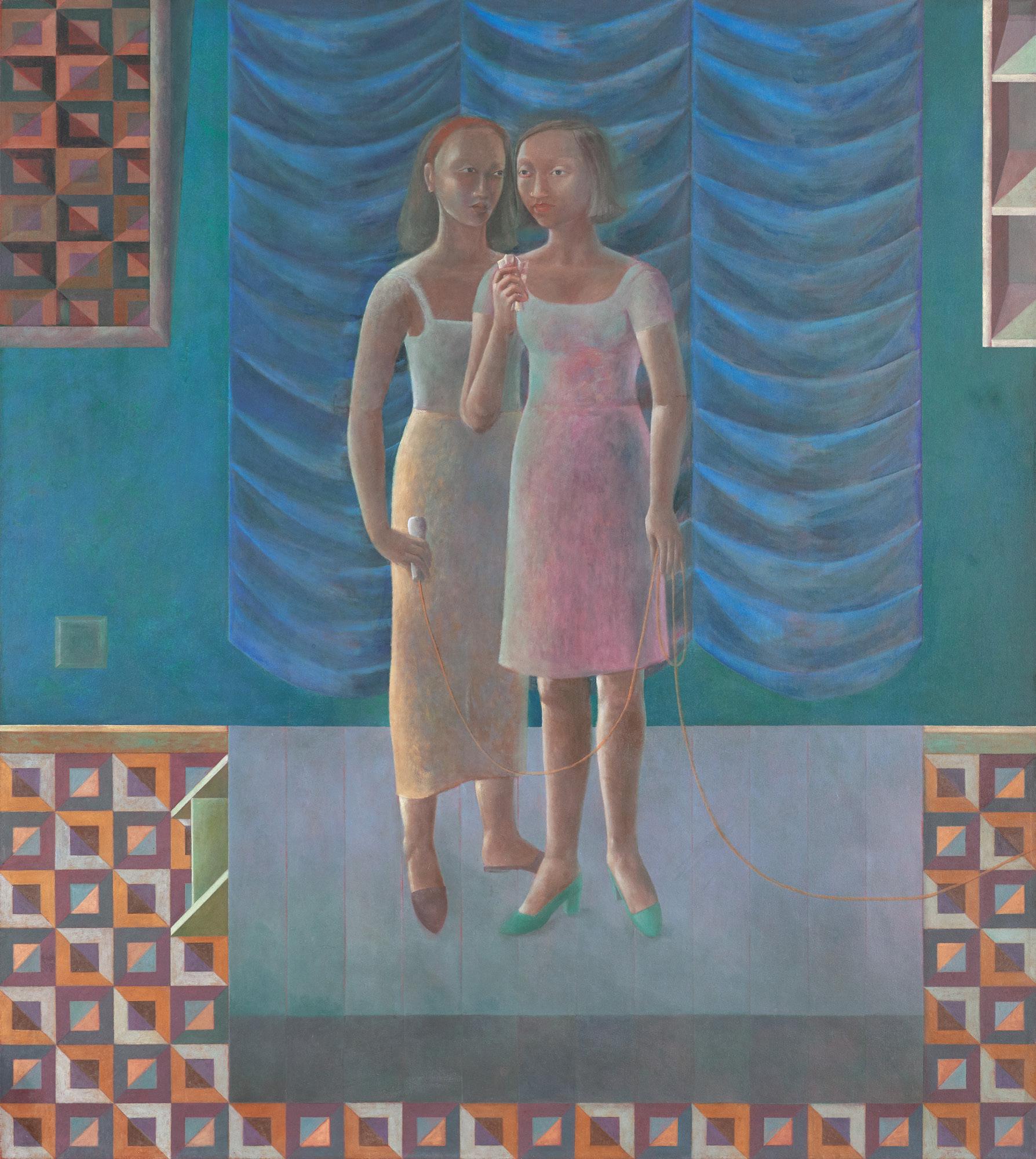
On the whole, Malaysia had 295,968 transactions worth RM119.08 billion exchanging hands throughout the pandemic year of 2020. When compared to the figures of 2019, this is a 9.9% drop in transactions (328,647) and 15.8% decline in value (RM141.4 billion). Whilst the percentage decline in volume was below 10%, the decline in value was higher at 15.8%. This means that the value of the transactions dropped more than the volume and translates to a 6.5% decline in the average value of each transaction ie. from RM430,000 in 2019 to RM402,000 in 2020.
The last time Malaysia had transactions lower than 2020’s figure was in 2006 with approximately 283,900 properties exchanging hands. The years preceding 2006 also had less than 2020’s total
Raindrops Falling on MY
A quick review of NAPIC’s data for 2020.

number of transactions. In terms of percentage growth, only 2016 and 2013 had a larger drop than 2020 at 11.5% and 10.9% declines respectively. But the biggest plunge was in 1998 with -32.3% caused mainly by the shocks of the Asian Financial Crisis. By value of transactions, 2010’s RM107.44 billion and the years prior with less than RM100 billion annually were the only years that registered lower values compared to 2020’s.
NAPIC’s data also reported a sharp drop across the sub-sectors in 2020 with residential declining 8.6%, commercial 21%, industrial 24%, agriculture 10.7% and development land 2.6%. In terms of value of transactions, residential declined by 9%, commercial 32.6%, industrial 14% and development land 34.0%. Only the agriculture sub-sector experienced a positive growth albeit a marginal one at 0.6%.
As the fright of Covid-19 has affected the business sector badly, it is not surprising that the demand for shops, retail and office space in 2020 came down significantly compared to the residential sub-sector which was supported by those buying for personal occupation. Further, the primary market was aided by the Home Ownership Campaign (HOC) 2020/2021 with discounts and incentives which boosted demand especially in the affordable segment. There is no surprise hence that the volume of commercial and industrial transactions dropped more than double that of the residential subsector and 8 to 9 times more than the development land sub-sector.
Whilst the volume of commercial transactions eroded by more than two times that of residential transactions, the value of the commercial transactions declined by more than three times. This implies that for the period under review, there is a higher proportion of lower priced commercial properties transacted compared to the corresponding period the year before.
Interestingly though, the industrial sub-sector was the best performing of all the sub-sectors amid the transaction volume and value declines. It is also worth noting that while the value of development land transactions slid marginally by only 2.6%, the value of the transactions registered the largest drop across all sub-sectors at 34%. This implies that the focus of the development land transactions for the period under review would be those which were less prime and of lower values, presumably suitable for development of affordable homes.
Residential: Led 2020
In terms of market share, the residential sub-sector led the overall property market with 64.7% contribution in volume, followed by agriculture at 20.7%, commercial 6.8%, development land and others 6.2%, and industrial 1.6%. In terms of value, residential also led the market with 55.3% market share, followed by commercial at 16.4%, industrial 10.7%, agriculture 10.5% and development land and others 7.1%.
In total, there were 191,354 transactions worth RM65.87 billion recorded in 2020, a decrease of 8.6% in volume and 9% in value as compared with 2019 (209,295 transactions worth RM72.41 billion).
Consistent with the overall decline, performance of the residential subsector dipped across the states except in Perak and Terengganu. It is interesting to note that while Perak is one of two states which did not register a decline, it is the third highest contributor to the residential property overhang in the country after Johor and Selangor.
Selangor: Highest Residential Volume
Selangor contributed the highest volume of residences at 23% or 44,034 transactions and 33% in value or RM21.72 billion. Although next door Kuala Lumpur recorded only 10,606 transactions or about a quarter (24%) of Selangor’s, its value of transactions was the second highest at RM8.24 billion contributing 12.5% of the market share or about 38% that of Selangor’s. In this regard, the average value per transaction in Kuala Lumpur is about 1.6 times higher than that of Selangor (RM777,000 vs RM493,000).
According to NAPIC, the downward trend in the major states of Kuala Lumpur (-4.5%), Selangor (-15.3%), Johor (-19.9%) and Penang (-7.7%) led to the overall decline in the residential sub-sector as it commanded 46.8% of the total national residential volume. Southern state Johor poses the highest concern as the decline in performance (both volume and value) is amongst the worst of all states and it also led in terms of residential property overhang (both volume and value).
New Launches: Declined
As most developers had deferred new launches in light of the pandemic-hit economy, the primary market saw a reduction of new launches with 47,178 units launched in 2020 against nearly 60,000 units in 2019. Sales performance was modest at 28.7% in 2020, lower than the 40.4% in 2019.
Kuala Lumpur recorded the highest number of new launches in the country, capturing nearly 21.8% (10,295 units) of the national total with sales performance at 18.6%. This is followed by Selangor with 7,330 units or 15.5% market share with sales performance at 39.1% and Johor with 5,913 units, 12.5% share and a sales performance of 29.3%.
The poorer sales performance across the country in 2020 was not unexpected as developers’ sales galleries had to close during the Movement Control Order (MCO) for about 3½ months. The adverse impact of the pandemic on businesses resulted in pay cuts and an increase in layoffs. The ensuing poor sentiments also caused buyers and investors to stay on the side lines. It goes without saying that the drop in sales performance would obviously compelled developers to defer new launches, particularly during the first half of 2020 and concentrate on clearing existing stock to reduce inventory and improve cash flow.
Type: Terraced Trumps
Terraced houses continued to be the preferred residential type as it made up 41% of the total transactions, followed by vacant plots (16.2%), high-rise units (14.4%) and low-cost houses/flats (11.6%). Terraced houses also dominated the new launches at 43.1% with single storey at 9,409 units and 2-3 storey with 10,944 units. This is followed by condominium/ apartment units at 39.7% share or 18,717 units. Developers with township developments were able to launch terrace house projects which enjoyed stronger demand than high rise strata developments and therefore had an advantage over developers whose existing landbank were focussed on high end condominiums/serviced apartments in the urban centres.
By price range, demand continued in the below RM300,000 segment which accounted for 61.7% of the total residential transactions, followed by RM300,001 to RM500,000 (21.9%), RM501,000 to RM1 million (12.7%) and more than RM1 million (3.7%).
Overhang: Slight Improvement Despite the enforced MCOs, the
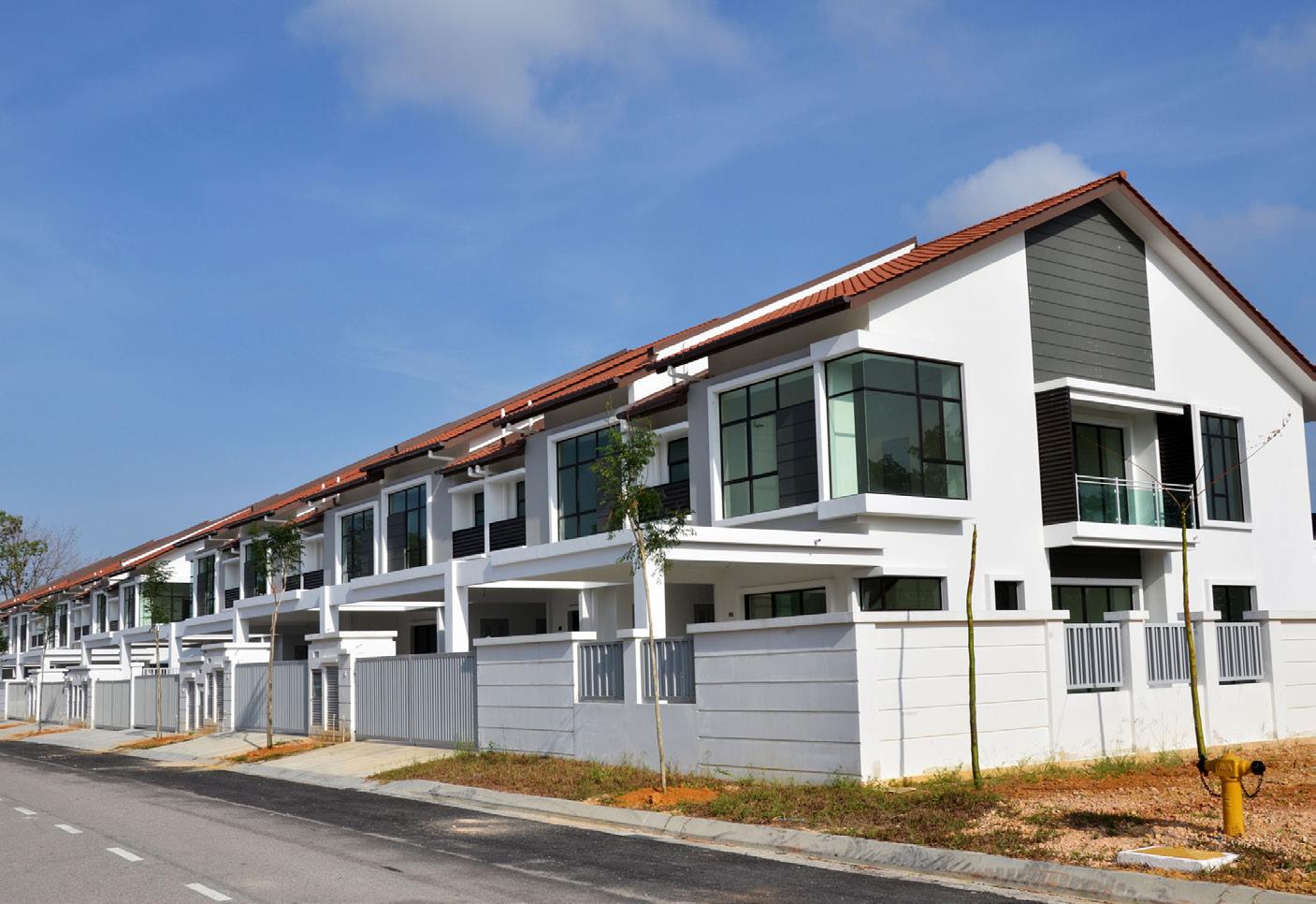
While residential led the market in 2020, terraced houses continue to be the favourite.
residential overhang situation improved by 3.6% to 29,565 units worth RM18.92 billion while its value of transactions also increased by 0.5% against Q4 2019 (30,664 units worth RM18.82 billion). It is therefore gratifying to note the improvement over two consecutive years of 2019 and 2020. This is clearly the result of the boost provided by the two HOC campaigns which reported sales achievements of 57,000 units worth RM37 billion for HOC 2019 and 34,000 units worth RM25.65 billion as at end February 2021 for HOC 2020. It is also not a surprise that property developers have clamoured for and appealed to the government to extend HOC 2020/2021 until the end of 2021.
Johor retained the highest volume and value of overhang in the country with 7,030 units worth RM5.48 billion, accounting for 23.8% and 29% respectively of the national total. This is due to the large number of units launched in recent years by foreign controlled developers in the state. The preponderance of units sold in the affordable categories (under RM300,000 and between RM300,001 to RM500,000) which contributed about 83% of residential units sold in 2020 will inevitably lead to more developers acquiring land and rebalancing their landbank portfolio to refocus on these segments of the market.
After Johor, Selangor has the second highest volume (4,889 units) and value (RM4.29 billion) of overhang units, followed by Perak (3,637 units, RM1.16 billion) and Kuala Lumpur (3,023 units, RM2.92 billion).
The biggest chunk of overhang residences are those priced under RM300,000 and between RM300,001 to RM500,000 which made up a combined 53.9% of the total residential overhang. It would have been natural to assume that the overhang homes within the affordable categories is low as they would be within the reach of the lower to middle income groups. It is also believed that the high overhang numbers in these affordable homes categories could be due to projects in unpopular locations, insufficient take-up of units under the Bumiputera quota, wrong products for that particular target market eg. apartments instead of the preferred landed properties and non-affordability of the houses in relation to the targeted buyers. All these call for more detailed research to get a better understanding of the local market dynamics and preferences.
Of the total national overhang, condominium/apartment formed the majority at 51.9% (15,354 units), followed by terraced houses (28.1%; 8,306 units). From the perspective of price, 34.5% or 10,199 units are priced between RM500,001 to RM1 million (higher than 2019’s 28.3%), followed by 29.6% or 8,758 units below RM300,000, 24.3% or 7,185 units between RM300,001 and RM500,000 and 11.6% or 3,423 units exceeding RM1 million.
Price Index: Marginal Uptick
Enveloped almost by an overall market setback in 2020 and also in the preceding few years from 2015, the Malaysian House Price Index (MHPI) still showed a growth trend albeit a low one. On the ground, developers have been offering discounts/rebates of a minimum of 10% besides other freebies to be eligible to participate in the two HOCs. Auction sales prices have also been going lower whilst owners have lowered their price expectations in the secondary market. By right this should translate to a decline in the MHPI. A possible explanation for this seeming anomaly would be that the basket of properties used by NAPIC to measure the HPI did not show any declines but an increase instead.
NAPIC’s data for MHPI in 2020 stood at 199.3 points with a low annual growth of 0.6%, the lowest recorded since 2010 with all states recording positive annual growth except for Kuala Lumpur (-1.0%), Selangor (-0.7%), Penang (-0.1%) and Sabah (-1.3%). Johor however bucked the trend to register a moderate 2.5% annual growth while the Terraced House Price Index also went up by 2% although it was the lowest in the decade. On the flip side, high-rise declined by 0.8%, semi-detached 0.6% and detached houses by 1.1%.




